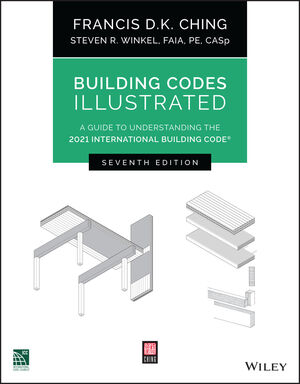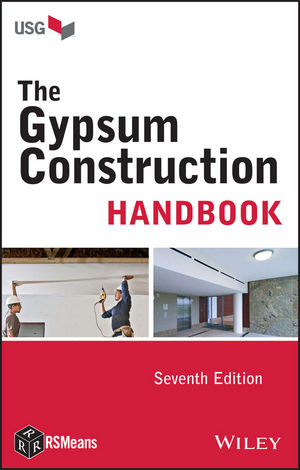More often than I would like, I get a pair of phone calls. The first one is to inquire on the best way to build a wall to isolate condominiums or hotel rooms from one another, and the second one, a few months later, is to inquire on the cheapest way to fix the inadequate walls that were put up. To paraphrase Jack Bergman, “There is never enough money to build a wall right the first time but there are always complaints to do it over.”
Those responsible for having made the construction decisions are quick to point out that the walls are built to “code.” This is a predictable legalistic defense of the individual but I doubt if his company’s mission statement reads, “If it’s good enough to pass code, then it’s good enough for the customer.” More likely, the mission statement of the company is based on “customer satisfaction.” Anyway, building codes deal with fire, structural, electrical and plumbing ratings, and little or nothing on sound isolation.
The responsible individual will also often correctly point out that only a few people complain. You would think if it was a big problem, then there would be a lot of complaints; but there are several reasons why the number of complaints is not proportional to the problem. Primarily, people do not like to complain. (When was the last time you told your waiter to take something back because it wasn’t prepared the way you like it?) Secondly, individuals have different sensitivities to noise (this is a function of age, hearing loss and psychology). Third reason is some neighbors are more annoying than others (hacking coughs and toilet sounds top the list of irritating noises). And finally, many buildings that have inadequate sound isolation have more empty units and, therefore, fewer people complaining. Hotels with falling occupancies and condominiums having difficulty leasing units may already be fighting a reputation for having paper-thin walls.
What can be done to improve sound isolation once the walls are up?

A typical situation
In a typical situation, two living spaces are separated by a standard fire-rated wall, consisting of a 3 3/4-inch metal-stud frame with one layer of 5/8-inch fire-rated gypsum board on each side. The wall runs from a concrete floor to the concrete deck. The wall contains electrical outlet boxes serving each side but these have been staggered so that boxes on opposite sides of the wall do not share the same space between studs. In addition to electrical lines, the separation walls contain plumbing for each unit, as well as low- voltage lines for doorbells, phone lines, audio and video.On one side of the wall we have a source of noise; the offending neighbor. The source is really a group of noise sources that are unique to the offending neighbor’s lifestyle: an alarm and a hacking cough announcing his 5:30 a.m. waking; the non-ignorable and agonizingly prolonged toilet sounds; the shower; the whine of a hair dryer; the scraping of hangers on the clothes rod; the drone of the television with that one wolf tone that penetrates through the wall every five seconds until finally the cacophony stops as his front door slams shut. The red curve in Figure A represents the total noise typical of life in a condominium.
On the other side of the wall, our goal is to keep the penetrating sound below some maximum. This maximum is selected according to a number of criteria, however, the green curve in Figure A represents acceptable background levels typical for a condominium. The goal is to improve the sound isolation of the wall to block out enough of the noise represented by the red curve to reduce it to or below the green curve. Unfortunately, with the typical firewall described, the noise is only reduced as shown by curve #1 in Figure A.

A few steps
The first consideration in improving the sound isolation of any wall is to make sure that there are no air passages through the wall. Even if the wall has been rated as a firewall, it should be rechecked. The periphery of the wall should be sealed to the floor, ceiling and adjoining walls with caulking. Outlet boxes and all other penetrations should be covered and sealed with fire-stopping putty. This step alone will typically yield an improvement as illustrated by curve #2 in Figure A.The most popular choice of fixes appears to be blown-in insulation. Popular because it is least disruptive, the improvement in sound isolation is minimal. Depending on the skill of the workmen, blown-in insulation may achieve the same thermal insulation ratings as installed fiberglass batting. Unfortunately, neither adds very much to the sound rating of the wall as shown by curve #3.
The next least obtrusive remediation is to add a layer of gypsum wallboard to one side of the wall. The underlying board should first be checked to ensure that it is rigidly attached to the framing. This may require fasteners to be driven at 6-inch intervals. Construction adhesive or tape is then spread evenly over its surface, a bead of caulk is laid on the floor, and the top layer set in the bead and fastened to the frame. Seams in the top layer are staggered from those in the underlying layer. The expected improvement in sound isolation is shown by curve #4.
By combining the above three steps, the total improvement in sound isolation is that indicated by curve #5 in Figure B. If the gypsum on one side of the wall can be removed, then the wall can be easily insulated and sealed using wet–applied cellulose or foam-type sprayed-on insulation. With one side off, additional isolation can be achieved by installing resilient channel, which tends to prevent vibrations from transferring from the frame to the gypsum layer supported by the channel. With the addition of the resilient channel, the sound isolation illustrated by curve #6 can be achieved.
In many jobs, the above improvements will not be enough to satisfy the user. This will be particularly true for walls that contain common plumbing or heating and air conditioning vents. These projects will require a redesign of the mechanical and/or plumbing systems to identify the source of noise and design the most cost-effective way to isolate it.
As you can see from the graph, as the repair work to the wall approaches a complete tear down and rebuild, the improvement in sound isolation approaches what was required in the first place. The best time to correct the construction of a wall is before it gets built.



